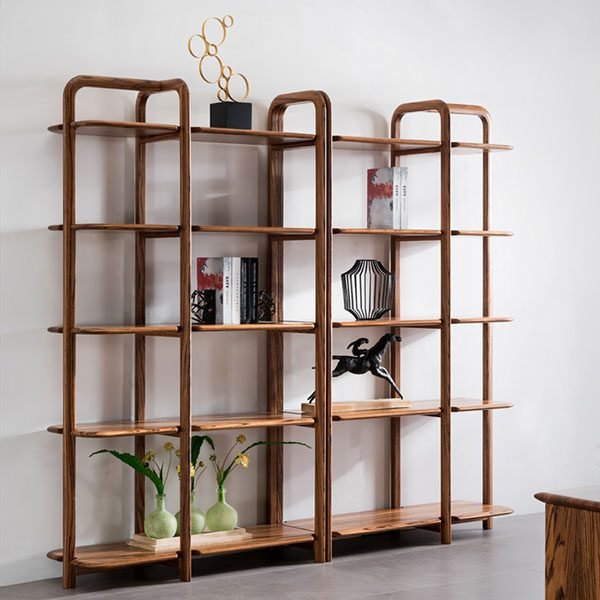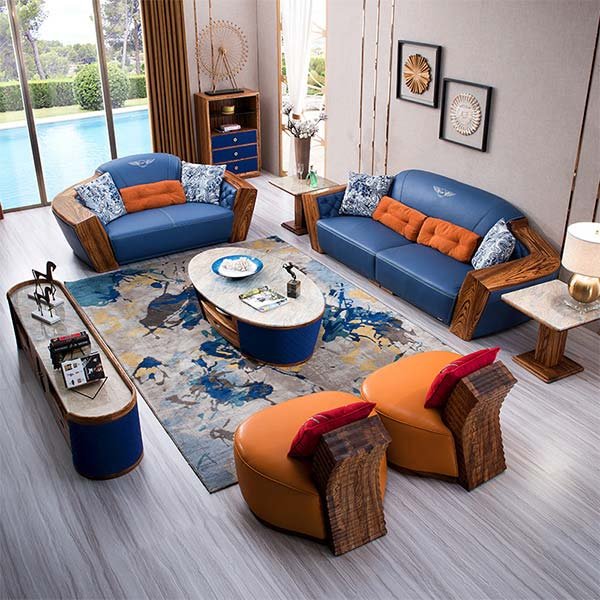“Maximize space, minimize clutter – the key to a cozy small living room!”
Utilize multi-functional furniture
When it comes to decorating a small living room, one of the key factors to consider is how to position furniture in a way that maximizes space and functionality. One effective strategy is to utilize multi-functional furniture.
Multi-functional furniture is a great solution for small living rooms because it serves more than one purpose, helping you make the most of the limited space available. For example, a sofa bed can be used as a seating area during the day and easily converted into a bed for overnight guests. This not only saves space but also provides added convenience.
Another option is to choose a coffee table with built-in storage compartments. This allows you to keep clutter at bay and make the most of every inch of space in your living room. Additionally, consider investing in a nesting table set, which can be easily stacked and stored when not in use, freeing up valuable floor space.
Incorporating multi-functional furniture into your small living room not only helps you save space but also adds versatility to your decor. By choosing pieces that serve more than one purpose, you can create a functional and stylish living room that meets your needs.
In addition to utilizing multi-functional furniture, another important aspect to consider when positioning furniture in a small living room is to prioritize the flow of traffic. It’s essential to ensure that there is enough space for people to move around comfortably without feeling cramped.
One way to achieve this is by arranging furniture in a way that creates clear pathways throughout the room. Avoid placing furniture in high-traffic areas or blocking doorways and windows. Instead, opt for a layout that allows for easy movement and promotes a sense of openness.
Consider placing larger furniture pieces against the walls to free up floor space in the center of the room. This not only helps create a more spacious feel but also makes it easier to navigate the room without obstacles. Additionally, using furniture with exposed legs can create a sense of openness and airiness, making the room appear larger than it actually is.
When positioning furniture in a small living room, it’s important to strike a balance between functionality and aesthetics. Choose pieces that not only serve a purpose but also complement the overall design of the room. Consider the scale of the furniture in relation to the size of the room to ensure a harmonious and visually appealing layout.
By incorporating multi-functional furniture, prioritizing traffic flow, and balancing functionality with aesthetics, you can effectively position furniture in a small living room to maximize space and create a comfortable and inviting environment for you and your guests. With careful planning and thoughtful consideration, you can make the most of your small living room and create a space that is both functional and stylish.
Use light colors to create the illusion of space
When it comes to decorating a small living room, one of the key factors to consider is how to position furniture in a way that maximizes space and creates a sense of openness. One effective strategy is to use light colors to create the illusion of space.
Light colors, such as white, cream, and pastel shades, have the ability to reflect light and make a room feel larger and more airy. By choosing light-colored furniture, walls, and accessories, you can visually expand the space and create a more inviting atmosphere.
In a small living room, it’s important to avoid dark, heavy furniture that can make the space feel cramped and cluttered. Instead, opt for pieces that are light in color and scale. Choose furniture with legs that are raised off the floor to create a sense of openness and allow light to flow underneath.
Another tip for using light colors to create the illusion of space is to keep the walls and ceiling in the same color family. This will help to visually expand the room and make it feel more cohesive. Additionally, using mirrors strategically can also help to reflect light and make the room appear larger.
In addition to using light colors, it’s important to consider the layout of the furniture in a small living room. One effective strategy is to place furniture against the walls to create a more open and spacious feel. This will help to maximize floor space and prevent the room from feeling cluttered.
When positioning furniture, it’s important to consider the flow of traffic in the room. Make sure there is enough space for people to move around comfortably without bumping into furniture. Consider creating distinct zones within the room for different activities, such as seating areas, a dining area, and a workspace.
To create a sense of balance and harmony in a small living room, it’s important to carefully consider the scale and proportion of furniture. Avoid overcrowding the space with oversized pieces, and instead opt for furniture that is appropriately sized for the room. Consider using multifunctional furniture, such as a coffee table with storage or a sofa bed, to maximize space and functionality.
In conclusion, using light colors to create the illusion of space is a key strategy for positioning furniture in a small living room. By choosing light-colored furniture, walls, and accessories, you can visually expand the space and create a more open and inviting atmosphere. Additionally, carefully considering the layout, flow of traffic, and scale of furniture can help to maximize space and create a sense of balance and harmony in the room. By following these tips, you can create a stylish and functional living room that feels spacious and welcoming, even in a small space.
Arrange furniture to create designated areas
When it comes to decorating a small living room, one of the most important aspects to consider is how to position the furniture in order to maximize space and create designated areas. By strategically arranging your furniture, you can make your small living room feel more spacious and functional.
One key tip for arranging furniture in a small living room is to create designated areas for different activities. This can help to visually separate the space and make it feel more organized. For example, you can create a seating area for watching TV or socializing, a reading nook with a comfortable chair and lamp, and a dining area for meals.
To create designated areas in your small living room, start by determining the focal point of the room. This could be a fireplace, a large window with a view, or a TV. Once you have identified the focal point, arrange your furniture around it to create a cohesive and functional layout.
Another important tip for arranging furniture in a small living room is to consider the scale of the furniture. In a small space, it’s important to choose furniture that is proportionate to the size of the room. Avoid oversized pieces that can overwhelm the space and opt for smaller, more streamlined furniture instead.
When arranging furniture in a small living room, it’s also important to consider traffic flow. Make sure there is enough space between furniture pieces to allow for easy movement throughout the room. Avoid blocking doorways or pathways with furniture, as this can make the room feel cramped and cluttered.
In addition to creating designated areas and considering the scale of the furniture, it’s also important to think about the placement of accessories and decor. Use rugs, throw pillows, and artwork to add personality and style to your small living room, but be mindful not to overcrowd the space with too many items.
When arranging furniture in a small living room, it’s important to be creative and think outside the box. Consider using multipurpose furniture, such as a coffee table with storage or a sofa bed, to maximize space and functionality. You can also use furniture with legs to create a sense of openness and airiness in the room.
Overall, the key to successfully arranging furniture in a small living room is to prioritize functionality and flow. By creating designated areas, choosing appropriately scaled furniture, considering traffic flow, and being mindful of accessories and decor, you can make the most of your small space and create a stylish and inviting living room. With some careful planning and creativity, you can transform your small living room into a cozy and functional space that meets all of your needs.
Заключение
Position furniture in a small living room to maximize space and create a functional layout. Consider using multipurpose furniture, such as a sofa bed or ottoman with storage, to save space. Place furniture against walls to open up the center of the room and create a more spacious feel. Use light colors and mirrors to make the room appear larger. Avoid cluttering the space with too much furniture and opt for smaller pieces that can easily be moved around. Overall, prioritize functionality and comfort when arranging furniture in a small living room.



